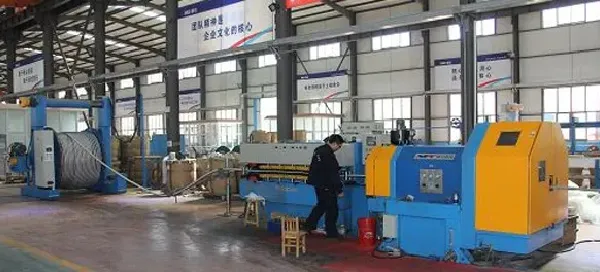Nov . 27, 2024 21:33 Back to list
Understanding the Benefits and Applications of Y-Type Strainers in Fluid Systems
Understanding Y-Type Strainers Essential Components for Efficient Fluid Management
In the realm of fluid management systems, whether in industrial applications, sewage treatment, or HVAC systems, ensuring the purity and smooth flow of fluids is crucial. One of the key components utilized in these systems is the Y-type strainer. This article delves into the intricacies of Y-type strainers, exploring their design, functionality, applications, and maintenance practices that ensure optimal performance.
What is a Y-Type Strainer?
A Y-type strainer is a type of filter used to remove debris or particulate matter from a fluid system. Its design resembles the letter Y, which not only contributes to its name but also reflects its functionality. Typically made from materials like stainless steel, carbon steel, or bronze, these strainers can handle various types of fluids, including water, oil, and gas, making them versatile components in many applications.
Design and Functionality
The Y-type strainer consists of a body with an inlet and an outlet, connected by a mesh filter element that traps unwanted particles as fluids pass through. The filter element, which can have various mesh sizes, is the heart of the strainer's functionality. The design allows for easy cleaning and maintenance; the strainer can often be disassembled without removing it from the pipeline, facilitating quick access to the filter element.
The unique Y shape of the strainer enables it to provide a low-pressure drop, allowing fluids to flow smoothly while effectively filtering contaminants. This is crucial in applications where maintaining consistent fluid flow is vital, as even minor pressure drops could lead to inefficiencies and operational issues downstream.
Applications of Y-Type Strainers
Y-type strainers find applications across numerous industries due to their effectiveness and efficiency. Common areas of application include
1. Water Treatment Plants They are used to remove sand, debris, and other particles from water, ensuring cleaner output for public consumption. 2. Industrial Processes In manufacturing and processing plants, Y-type strainers protect equipment like pumps and valves from damage caused by foreign particles.
3. HVAC Systems In heating, ventilation, and air conditioning systems, these strainers are integral to maintaining system integrity by preventing contaminants from entering pumps and coils.
y type strainer

4. Marine Applications In ships and offshore installations, Y-type strainers are used in cooling water systems and fuel lines to ensure optimal performance in harsh environments.
5. Chemical Processing They play a vital role in preventing solids from entering critical equipment, thereby safeguarding operations in chemical manufacturing.
Maintenance of Y-Type Strainers
Regular maintenance of Y-type strainers is essential to ensure their effectiveness and longevity. Here are some best practices
- Routine Inspection Periodic visual inspections can help identify any signs of wear or blockages. Operators should check for leaks or abnormalities in the flow rate.
- Cleaning the Filter Element Depending on the fluid and operating conditions, cleaning the filter element should be done at scheduled intervals. This process can often be performed without removing the strainer from the system, making it convenient and efficient.
- Replacement of Worn Components Parts such as gaskets and seals can wear out over time. Replacing these components as part of regular maintenance will help prevent leaks and ensure the integrity of the strainer.
- System Monitoring Implementing flow meters and pressure gauges can help monitor the performance of the strainer and provide real-time data about its condition, allowing early intervention if issues arise.
Conclusion
Y-type strainers are indispensable components in fluid management systems, blending efficiency with practicality. Their ability to filter out particles effectively reduces wear on crucial equipment, ensures smooth fluid flow, and enhances the overall reliability of fluid systems. By understanding their design, applications, and maintenance needs, operators can leverage Y-type strainers to achieve optimal performance in various industrial applications, leading to improved productivity and longevity of system components. As technology evolves and industries grow, the significance of Y-type strainers will undoubtedly remain a constant in the pursuit of efficiency and reliability in fluid management.
Share
-
Reliable Wafer Type Butterfly Valves for Every IndustryNewsJul.25,2025
-
Reliable Flow Control Begins with the Right Ball Check ValveNewsJul.25,2025
-
Precision Flow Control Starts with Quality ValvesNewsJul.25,2025
-
Industrial Flow Control ReliabilityNewsJul.25,2025
-
Engineered for Efficiency Gate Valves That Power Industrial PerformanceNewsJul.25,2025
-
Empowering Infrastructure Through Quality ManufacturingNewsJul.25,2025